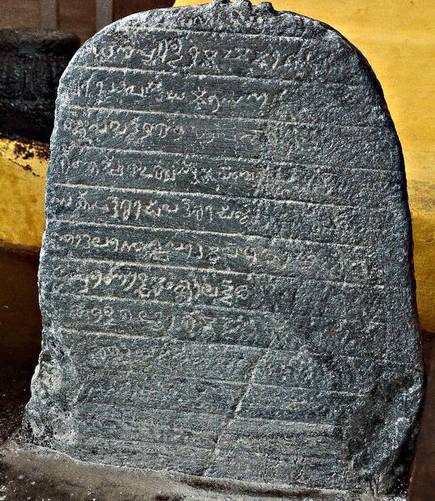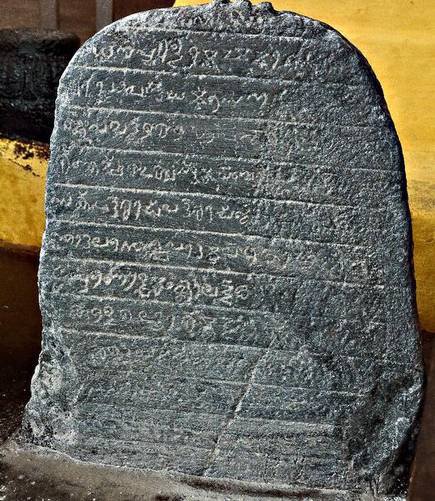
A Tulu inscription, dating back to the 12th century and said to be the oldest discovered till date, has been found at the Sri Veeranarayana Swamy Temple in Kulashekhara village of Mangaluru, Karnataka, India
The 14 line, 2- ft. tall inscription was discovered on the left side of the sanctum sanctorum of the temple in the village, which is believed to have been named after Alupa king, Kulashekhara.

Prof T Murugeshi of the history and archaeology department of the MSRS College- Shirva and his students have concluded after studying the inscription that it dates back to the 12th century as it mentions the year 1159 AD and talks about “Kule (Sekhare) Lokontamanta,” which is the exact Tulu translation of “Samasta Loka Vikyata Kulashekhara,” the Kannada title of king Kulaskhera.
The professor, who was guided by Mr Vignaraj of the Sri Dharmasthala Samskruthi Samshodhana Samsthe in reading the inscription, says it reveals that 12 villages came under the jurisdiction of the temple at the time.
“The inscription is very important for the information it provides about the Alupa dynasty. The first inscription found of Kulakshekara dates back to 1162. But now with this inscription we know that he was in power by 1159,” he adds.
Although Tulu inscriptions have been found in Kasargod and Udupi districts, this is the first to be found in Dakshina Kannada district. While the inscriptions discovered in other places do not have proper dates, the Mangaluru temple inscription is specific in its dating, he points out.
“It may be the oldest Tulu inscription discovered till date and can be called the Halmidi inscription of Tulu (Halmidi inscription is the first Kannada inscription),” he adds.
The inscription begins with an invocation of lord Hari, a Vaishnavite god, who is still worshipped as Sri Veeranarayana Swamy temple in Kulashekara. It is dated in Solar year and is the first Tulu dated inscription so far discovered.
“The inscription mentions that the god belongs to 12 villages as ‘pitru-devata.’ Janardhana was generally treated as the bestower of salvation on the departed souls. Interestingly, the image of Veeranarayana of Kulashekhara also holds a ball-like thing in his right hand, which is called as Pinda,” the professor said.
Pure Tulu words have been used in it. So, it becomes the earliest record of Tulu language so far found, he said.
“It has definitely provided a solid base for the language and script and supports the demand of the Tuluvas for inclusion of Tulu in the Eighth Schedule of the Constitution,” he said.